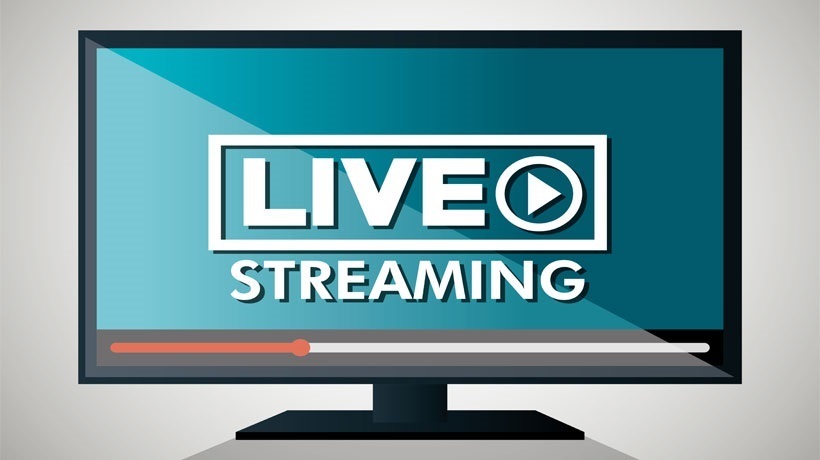4 Ways Schools Can Benefit From Live Streaming
Technology is reshaping all realms of our life, and education is no exception. To spark interest among tech-savvy students, teachers go to great lengths and delve into the world of blended learning, flipped classrooms, gamification, and more.
With live streaming trending everywhere from sports to medicine, schools should not miss out on the opportunity to leverage it. Here’s why:
1. Encourage Remote Attendance
School attendance can be an uphill battle. However, live streaming allows stepping outside the classroom constraints and making classes more accessible. Broadcasting a lecture or a workshop enables students to never miss a class and keep up with the rest of the group.
Being a valuable resource fορ learning materials, lecture recordings can also be incorporated into a VoD library via Live-to-VoD functionality. This can help students catch up on any missed classes, study on their own, or review for exams.
2. Broadcast School Events
School plays, contests, sports events, graduations, and other ceremonies are all a good match for live streaming. Parents with busy schedules often find it hard to make it to school in time for their child’s play or a PTA meeting. But watching it online in real time could be the next best thing.
A shiny example is King’s Bruton—its media page includes a live streaming section and a library with videos covering all spheres of school life.
Also, by streaming and recording important events you tell your school’s story. Video storytelling is a powerful tool that helps you build trust and confidence, bring transparency, and market your school brand — all while assuring parents that enrolling their children in your school is a smart choice.
3. Build Community
Live streaming has the power to extend the sense of community beyond the school walls. It expands the barriers and helps form a stronger connection between alumni, students, parents, and teachers no matter where they are.
The technology increases the level of visibility into school life and ensures greater involvement. A school event streamed to a large audience engages far-flung families and brings the community together.
4. Promote Collaboration
With your own live streaming solution, there is no need to limit collaboration to one classroom. Geographical location is no longer of critical importance, and teamwork can happen on a global scale.
Challenge your students with a collaborative project to work together with teachers and students from other schools, or even countries. Invite renowned guests to share their experience on the topic and boost the learning process.
Why Choose A Custom Online Video Platform (OVP) Over A Free Service Like YouTube?
Budgetwise, going for a free platform to stream your content may seem like a no-brainer. With YouTube Live, all you need to get started is a verified account and encoding software.
But a free service comes with certain limitations. For instance, when uploading your content, you grant to YouTube the license to use, reproduce, and distribute it—that might be a point of concern for those users who want to retain full control over their data.
There could also be other disadvantages that should not be taken lightly, some of which are listed below.
1. Support
To go off without a hitch, your live streaming platform needs to be robust and reliable. While YouTube offers technical support, it is limited to the help section and the YouTube help community. Moreover, YouTube does not warn about scheduled upgrades, which can result in issues with live streaming.
With a business-grade custom online video platform (OVP), you can enjoy the benefits of a dedicated support team working round the clock to ensure a flawless video experience. Sign a Service Level Agreement with your OVP provider to guarantee the desired level of service.
2. Branding
A clean video player without a third-party logo lingering around is not something that a free video platform can offer. If you are looking to promote your school brand and get better recognition, this may be a significant drawback.
A white-label video streaming solution allows you to get your own personalized branding and customize your player to match your website’s look and feel. A custom player design with your logo on it demonstrates professionalism and promotes trust, which is something both educators and students will appreciate.
3. Control Over Advertising
Free streaming services like YouTube rely heavily on advertising, which teachers may consider unprofessional and even disruptive. Having no control over the choice of ads displayed on your YouTube streams, you may as well see an ad of a competing college luring away your best athletes or talented students.
While YouTube lets you disable the advertising option altogether, an enterprise-grade OVP not only allows you to control your ads, but also try other monetization models. Provided you have a high retention rate—and parents tend to be the most loyal consumers when it comes to their children—experimenting with a subscription-based model can be profitable.
4. No Unrelated Content
Another argument to consider when using a free service like YouTube is its recommendation system. Unrelated videos appearing on the sidebar can distract viewers from the topic at hand. Remember the last time you went down a rabbit trail and ended up watching cute cat videos?
For schools, it’s important to maintain students’ focus throughout the teaching process. With so many distractions around, the last thing educators want is to vie for students’ attention with irrelevant, yet engaging, video content.
5. Integrated Analytics
When it comes to metrics, YouTube has a rather limited toolset to help you understand your consumers better. Being a social media platform in the first place, it collects demographics information, traffic sources, and view counts, but it does not enable data breakdown on a per-user basis.
A top-notch video platform takes analytics a step further by providing a slew of heavy-duty tracking tools to specifically identify your viewers and their viewing behavior. Use these insights to find your most engaging content, structure the education process more efficiently, or create better-tailored aptitude tests.
Conclusion
Digital-savvy students expect schools to keep up with the fast-changing world. And with live streaming technologies it is now easier than ever to bring your school into the modern age. Live streaming breaks down geographic barriers, encourages greater student involvement, creates better learning opportunities, and helps build stronger communities.








